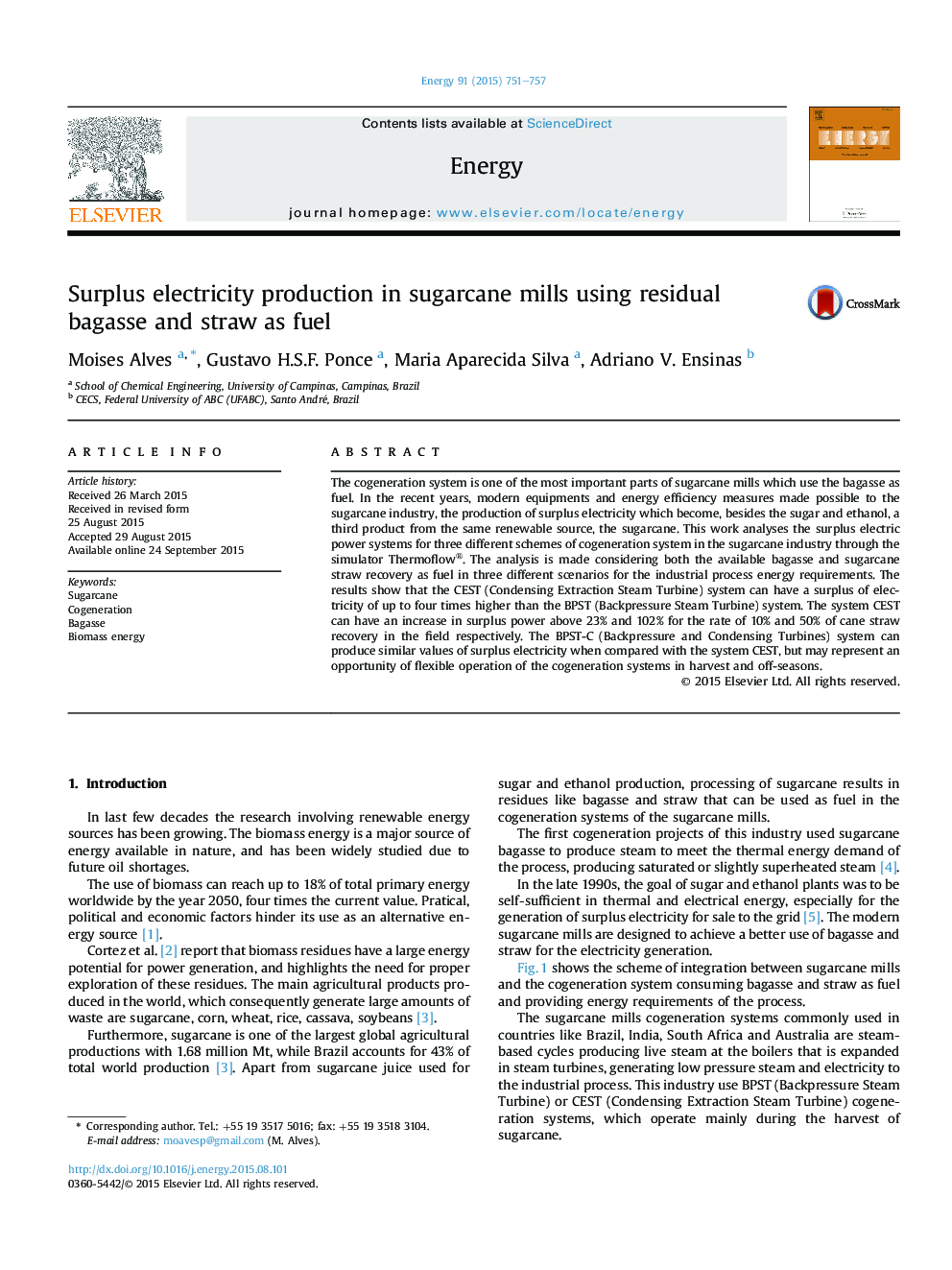| Article ID | Journal | Published Year | Pages | File Type |
|---|---|---|---|---|
| 1731532 | Energy | 2015 | 7 Pages |
•At least three cogeneration system options are available in sugarcane mills.•Nowadays, only steam-based cycle cogeneration systems are used in sugarcane mills.•BPST system is limited to 70 kWh/t cane of surplus electricity production.•CEST system increases the surplus electricity up to four times than the BPST.•Operation during off-season of the BPST-C system is an advantage for this option.
The cogeneration system is one of the most important parts of sugarcane mills which use the bagasse as fuel. In the recent years, modern equipments and energy efficiency measures made possible to the sugarcane industry, the production of surplus electricity which become, besides the sugar and ethanol, a third product from the same renewable source, the sugarcane. This work analyses the surplus electric power systems for three different schemes of cogeneration system in the sugarcane industry through the simulator Thermoflow®. The analysis is made considering both the available bagasse and sugarcane straw recovery as fuel in three different scenarios for the industrial process energy requirements. The results show that the CEST (Condensing Extraction Steam Turbine) system can have a surplus of electricity of up to four times higher than the BPST (Backpressure Steam Turbine) system. The system CEST can have an increase in surplus power above 23% and 102% for the rate of 10% and 50% of cane straw recovery in the field respectively. The BPST-C (Backpressure and Condensing Turbines) system can produce similar values of surplus electricity when compared with the system CEST, but may represent an opportunity of flexible operation of the cogeneration systems in harvest and off-seasons.
